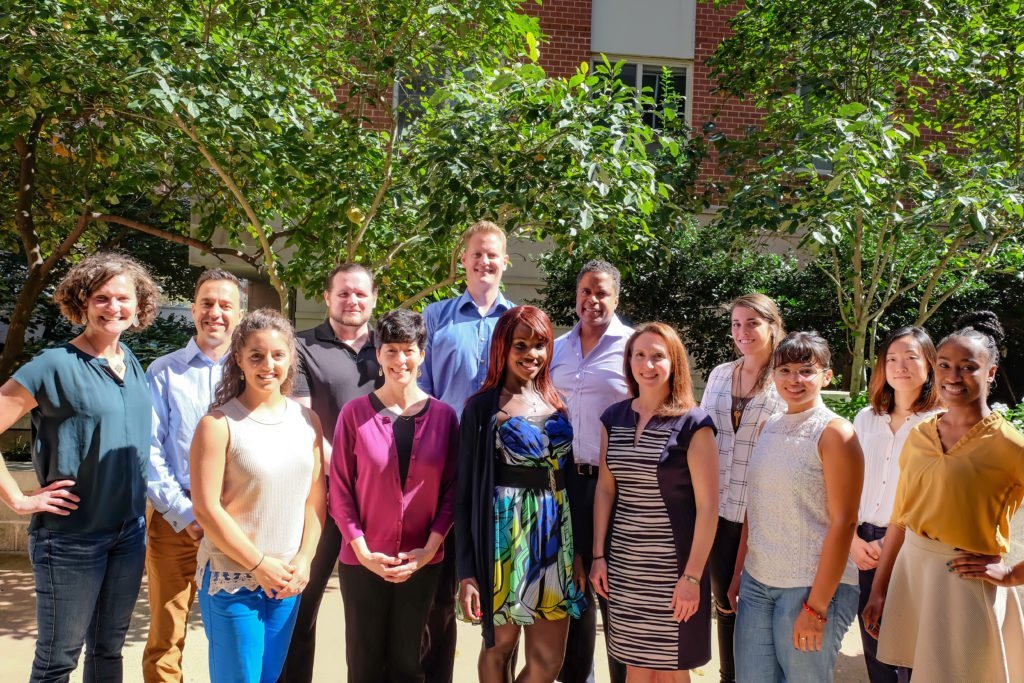An injury is an athlete’s worst nightmare, yet it’s seemingly inevitable. Pushing one’s body to its limit can result in overuse and over-training, which opens the door to injury. Whether one is a professional athlete, an amateur athlete, a youth athlete, or an everyday jock who participates in challenging sports and physical activities, the risk of injury and the process of recovery are daunting concerns.
Athletes who are constantly seeking to reach new levels of endurance and performance face great pressure to get well quickly and return to physically strenuous activities after injury. As a consequence, many athletes are unable to heal properly and often return to their sports before their bodies are ready.
As seen in most sports, professional athletes generally recover from injury faster than amateur sports enthusiasts — usually due to the high level of holistic and integrative care they are able to access. Professional Washington, D.C., sports teams such as the Capitals, the Wizards, the Redskins, and DC United all incorporate results-orientated massage as an integral part of athletes’ wellness and healing regimens. Manual therapy care is frequently conducted under the management of a team athletic trainer or team doctor who is responsible for determining the cause and diagnosis of the injury or dysfunction.
Similar to professional athletes, amateur athletes and sports lovers want to get well quickly and correctly. The goal of clinical massage is to enhance the speed and efficiency of the recovery process, and to help prepare athletes for the next game, match, or race without leaving them vulnerable to further injury.
Incorporating clinical massage is an optimal method in the healing regimen for athletes at all levels. It is a great timesaver, directly and naturally reducing pain and muscle fatigue, and increasing the feeling of structural integration.
3 Phases of Injury and Recovery
Once a soft-tissue sports injury — or any injury — has occurred, there are three distinct stages in the healing process, which share interconnected physical and chemical systems.
The soft tissue of the body includes muscle, fascia, tendons, ligaments, connective tissue, and joint capsules. Since the three phases of recovery are regular and predictable for all injuries, the injury and healing process for the athlete can be monitored to determine which type of soft-tissue manipulation is most effective in enhancing the speed of recovery, depending on which of the three stages is present.
The first phase of an injury is the inflammatory stage. The inflammatory stage usually lasts up to one week and tends to show symptoms of pain, emanating heat, swelling, redness and obstructed or loss of function. Inflammation can be either chronic or acute depending on the specifics of the injury. Acute inflammation is usually short term in duration. Acute inflammation consists of swelling caused by the presence of white blood cells, protein, and plasma. Chronic inflammation is extended in duration and is typically identified through the presence of white blood cells and scar tissue.
The inflammation process highlights the zone of primary injury and is a commanding part of recuperation. It’s important to contain the zone of primary injury to the smallest region possible.
Although inflammation may seem like an undesirable effect, it’s critical in initiating the healing of the injury. With that said, swelling also has the ability to become extremely harmful to tissue regeneration and recovery if left untreated and unmanaged. Simply icing the injury and taking anti-inflammatory medication or pain medication is not enough to yield a quick and effective recovery. The area of injury is at risk of becoming hypo-toxic if it remains too long with excess fluids and damaged tissue. The management of injury-related inflammation can be achieved through various lighter manual techniques.
The second phase of injury is the proliferate or “regeneration” stage. The proliferate stage often coincides with the inflammatory stage and can last up to three weeks. The primary goal in this phase is to repair the existing tissue and enhance the development of new tissue and blood vessels.
This process results in the generation of collagen and scar tissue through an interdependent healing process powered by the accumulated foundation of fluid and fibroblasts that initially become present during the inflammation stage. Scar tissue creates weakness within the tissue system and decreases flexibility and balance to the area of injury, leaving the sight of injury and the overall body more vulnerable to re-injury. The process of creating a more functional scar can quickly be enhanced through the manual manipulation techniques, particularly some of the deeper techniques combined with stretching.
The third phase of injury is the maturation or “renovation” stage. The maturation stage is the final process of healing in which the initial mass of repairing fluids is transformed into newly developed tissue. When scar tissue and new tissue begin to develop at the sight of injury, there is gradually decreased blood flow and decreased fibroblast activity in the area of healing — as had existed prior to the injury. The chemical activity at the sight of injury decreases to normal levels compared to the intense chemical activity occurring during the inflammatory stage.
Clinical massage plays a role in all three phases. The use of clinical massage in combination with cold and ice pack therapies drastically speeds healing by keeping the inflammation contained and reduced. Once the area of injury starts to proliferate and tighten, clinical massage warms and loosens the fibrous tissue to promote movement and increase blood flow to the healing region. Deeper manual techniques and stretching are used to normalize and improve the function of the newly developed tissue, which results in improved range of motion, improved flexibility, improved scar mobility, and the removal of trigger points and adhesions.
Clinical Massage as a Treatment Plan to Recover From Injury Faster
Although clinical massage can sometimes be a painful procedure to endure, ultimately, stretching, trigger-point therapy, lymphatic drainage, and myofascial release techniques greatly increase an athlete’s pain management and flexibility threshold.
The difference between a regular pre-event or post-event sports massage and a clinical sports massage is that a clinical massage results in measurable outcomes based on the initial service and evaluation. Clinical massage therapists incorporate muscle testing, subjective observations from the athlete, objective visual observations of gait and palpation throughout the service. The practitioner measures and documents changes from session to session to determine the pattern and pace of functional improvement.
As with most manual therapies, clinical massage involves short-term goals, long-term goals, and a detailed treatment plan based on the athletes’ individual goals, health history, and athletic training regimen. The frequency and number of sessions needed to obtain optimal results is determined and recommended by the clinical massage practitioner.
Clinical massage soft-tissue manipulation techniques such as light lymphatic massage and lymphatic drainage are highly effective in reducing and containing the area of inflammation during the initial two to seven days after an injury, trauma or surgery. Measureable outcomes include the changing levels of pain the athlete feels on the pain scale, or the degrees in the change in range of motion in a restricted area on the shoulder or hip, for example.
Clinical massage prepares, improves and enhances the body’s ability to return to pain-free structural alignment and balance for optimal sports performance. Athletes also benefit from a calmer nervous system and reduced cortisol production which directly results in relaxation and a reduction of stress. As a result of clinical massage the body is left more limber, functional, strengthened and less prone to future injuries.
The application of clinical massage for sports injury rehabilitation yields immediate results of relief and healing for injured athletes. It also reduces the time needed to heal properly to get back to sports and exercise. In the case of very serious injuries, consultation first with a medical doctor is highly advised.










